Daytripper — Background
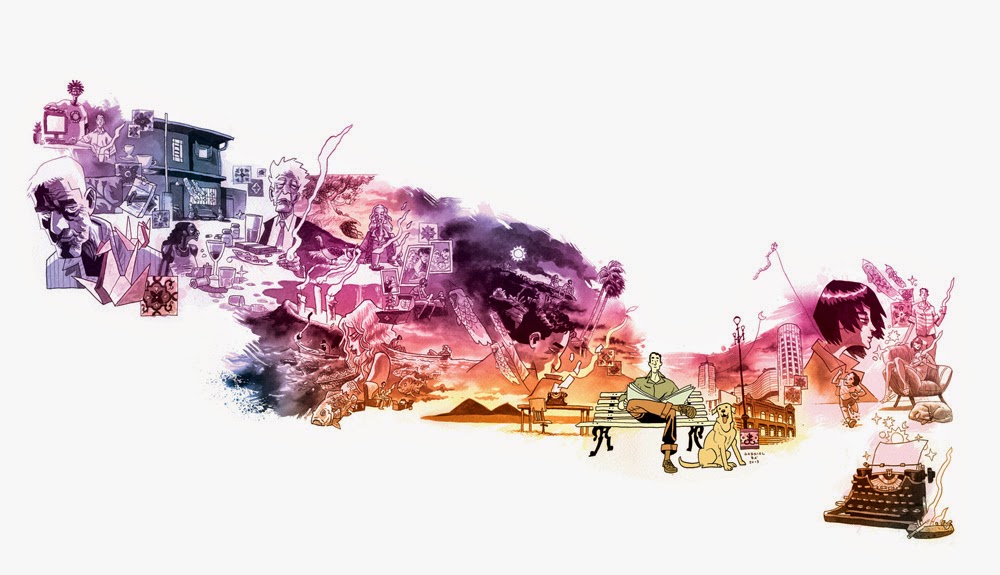
Daytripper was initially a ten-issue American comic book limited series by Fábio Moon and Gabriel Bá, published in 2010 by the DC Comics imprint Vertigo. In 2011 the issues were all collected into a trade paperback book.
The trade paperback went into The New York Times Paperback Graphic Books chart at #1 in February 2011.
It is often named among the best graphic novels of the modern era, both for its art and the emotion it contains.
Magical Realism

If this were a realistic story, it would be mighty short. In fact, it would be over after the first chapter. But it's obviously not realistic. Rather, it's written in a manner that is associated with writers from Latin America and South America, Magical Realism.
In a nutshell, with Magical Realism the world of the text is still grounded in what we recognize as the real world, but fantastical elements are considered normal in this world. Like fairy tales, works of magical realism blur the line between fantasy and reality.
There are a few common elements in works of magical realism:
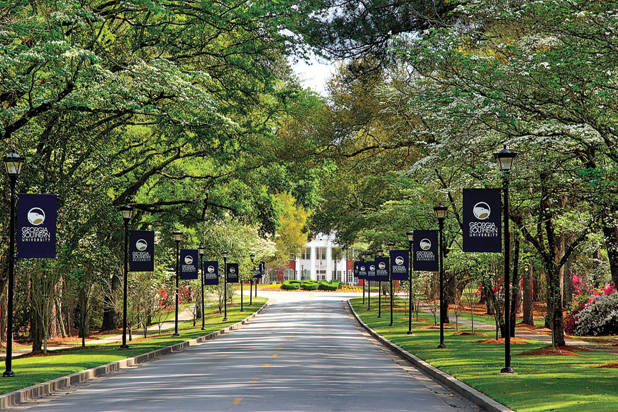
They all have a realistic setting.
They take place in a setting in this world that’s familiar to the reader.

They all contain magical elements.
From talking objects to dead characters to telepathy, every magical realism story has fantastical elements that do not occur in our world. However, they’re presented as normal within the novel.

They don't explain themselves.
There is limited information for readers to go on. Magical realism authors deliberately leave the magic in their stories unexplained in order to normalize it as much as possible and reinforce that it is part of everyday life.
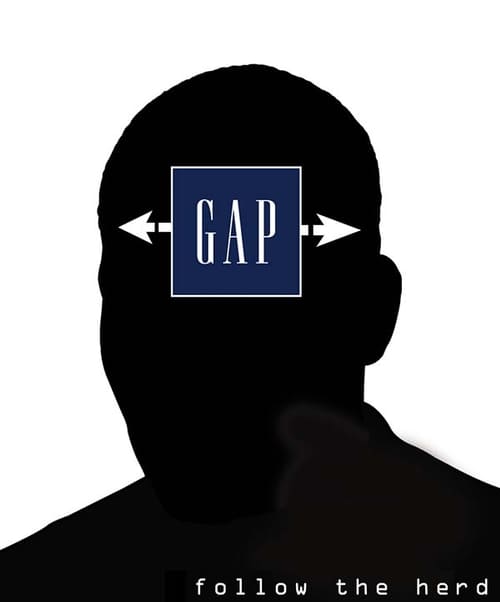
They critique social and political problems.
Authors often use magical realism to offer an implicit critique of society, most notably politics and the elite. One of the reasons why the genre is so popular in places like Latin America is because those places were economically oppressed and exploited by Western countries. Magic realist writers used the genre to express their distaste and critique American Imperialism.
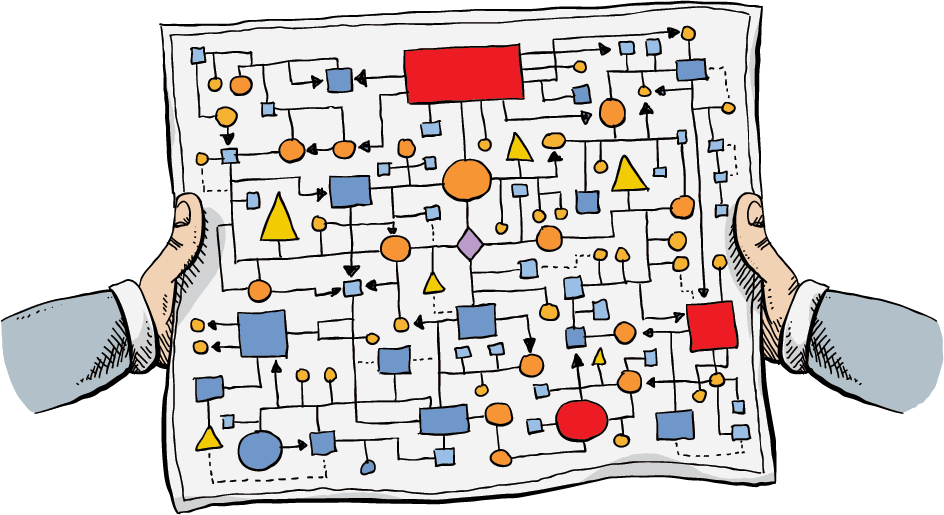
They have unique plot structures.
Works of magical realism don't follow a typical narrative arc with a clear beginning, middle, and end. This makes for a more intense reading experience, as the reader does not know when the plot will advance or when the conflict will take place.
So Many Bráses
You can ask a lot of questions about this text, and about these multiple protagonists. Or this single protagonist on multiple days. Or this single protagonist with multiple lives. But there's only one you can't ask: "Which one of these is real"?
The answer is both obvious and confusing: they all are.
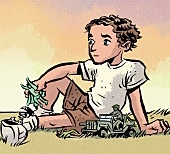 |
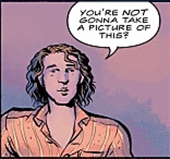 |
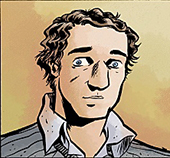 |
 |
 |
Brás at 11 |
Brás at 21 |
Brás at 28 |
Brás at 32 |
Brás at 33 |
 |
 |
 |
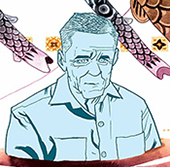 |
 |
Brás at 38 |
Brás at 41 |
Brás at 47 |
Brás in his dream |
Brás at 76 |
The Boys from Brazil
You're probably way too young to get that reference, but I'm not talking about the 1976 novel or the 1978 movie with that title about a Nazi Hunter who discovers a plot to clone Adolf Hitler and create a Fourth Reich (the clones are those titular boys).
Moon and Bá are ultimately Boys from Brazil, and so this work has a lot of references that Brazilians would get, but we miss. Here are a few of them:
The name "Brás" isn't really a thing in Brazil, because in Portuguese—which is the native language there—it means "someone who stutters or stammers." But it is made up of the first four letters of the name of the country in Portuguese, "Brásil."
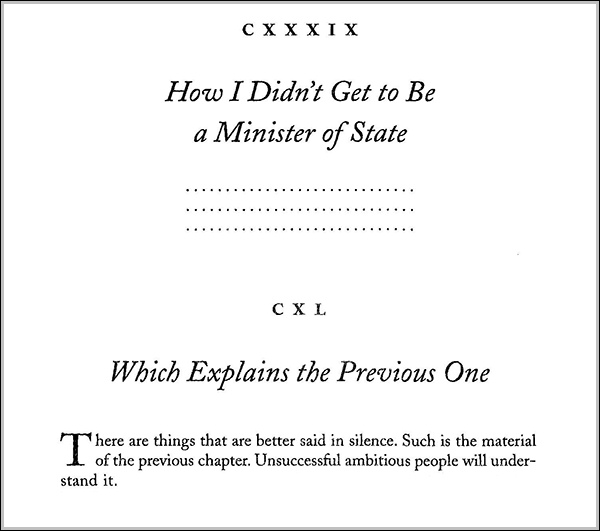
One is just a series of dots, and the next, which says it will explain those dots, doesn't.
Brás' name is also a reference to one of the most famous characters in Brazilian literature, Brás Cubas. He's the main character in an 1881 novel by Machado de Assis, The Posthumous Memoirs of Brás Cubas. This novel is made up of short chapters that shift wildly in their tone and style, and has a convoluted and surreal plot which always leaves readers guessing about what is real. And that's just the kind of question you'll be asking after a chapter or two of Daytripper. In both novels the main characters are telling the stories of their deaths. Brás Cubas makes it clear to the reader that he is already dead and is telling the story of his life from beyond the grave, while Brás de Oliva Domingos dies in a different way at the end of each chapter.
In a 2012 interview, Moon and Bá explained that their main character "is a homage, a homage that makes sense because Brás's father is a very famous writer. The kind of father that would give his children the name of a character in a novel. Our Brás dies, and Brás Cubas dies as well."

When the Portuguese began bringing enslaved people to Brazil from West Africa in the 16th century, they did not allow those who were enslaved to practice their native West African religion, Yoruba. Instead, they were forced to practice Christianity. What sprung up in Brazail was an amalgamation of these two belief systems, Candomblé. And this didn't just happen in Brazil; on almost every island in the Caribbean, and in many places in the American south, long-remembered animist beliefs were combined with enforced Christianity, creating syncretic belief systems you might recognize: Pan-Caribbean Obeah, Haitian Vodou, Cuban Santería and Palo, Jamaican Myal, Quimbois in Guadeloupe and Martinique, Shango in Trinidad, Dugu in Honduras, and Hoodoo and Louisiana Voodoo in the US.
The second chapter takes place in and around the Festival of Iemanjá. In Candomblé she is an orixá (goddess) of the sea. She's known as "The Queen of the Ocean," and is is one of the seven most powerful orixás in Candomblé. She is the patron deity of the feminine principle of creation and the spirit of moonlight, and thus deals with every aspect of womanhood, fertility and family. She's the protector of children, as well as sailors and fishermen (she controls how much they catch). In general, Candomblé makes a connection between the orixás of the Yoruban pantheon and the collection of Catholic saints. Iemanjá is always connected with the Virgin Mary, and so is usually shown wearing either blue or white. Throughout the day of the Festival followers of Candomblé offer flowers and gifts to Iemanjá at the sea’s edge. Everyone dresses in white, and night-long music and dancing continue after the offerings have been made.

There are many places in Brazil that hold festivals for Iemanjá, but the biggest is in Salvador, on February 2 every year. February 2 is also the Feast of Candlemas, which celebrates Mary's ritual purification according to Mosaic law 40 days after the birth of Christ. So the Yoruban/Christian syncresis is reinforced on this day.

The Salvador Festival. Moon and Bá set the beach scenes in chapter 2 in this bay.
Compare this photo with their drawings to see their great attention to detail.
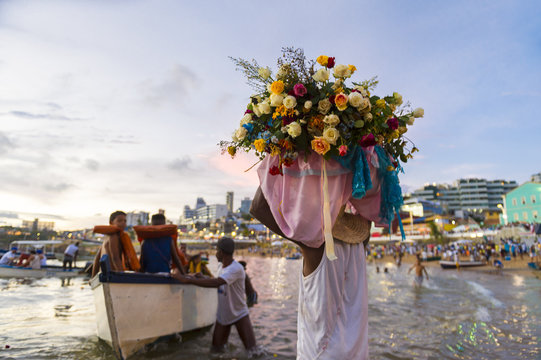 Offerings for Iemanjá |
 Taking offerings seaward |
There are plenty of examples of Portuguese wordplay, along with some blink-and-you'll-miss-it surprises in the illustrations. Here are a few:
- Jorge's last name is "dos Santos," "of the saints," connecting him with the orixás and caballos of Candomblé.
- When Brás first sees Ana, the woman he knows he's going to spend the rest of his life with (Chapter 3), he's in the Santa Maria Bakery. Given the connection between Iemanjá and Mary, it seems that she has led him there a year after Olinde has left him.
- The first time we get a good look at Ana, she's standing next to a bin of baked goods called Samanta Salgada. That's "Savory Cookie" or "Savory Biscuit" in English, a perfect descriptor of how he sees her.
- At the end of the same chapter, the delivery truck that hits him has Foda. Entregas on the side. That's literally, "Fuck. Deliveries." I'm pretty sure that's what he was thinking as it ran him over.
- The Angola chickens in Chapter 5 keep repeating, "I'm weak."
- Those chickens are all named for characters in Brazilian Telenovelas, but we only know the name of one of them. Mario do Carmo was the main character in Woman of Destiny. It ran for less than a year in 2004-2005. But it looks like Moon and Bá used it because the story begins in 1968, on the day that Institutional Act Number Five (AI-5) is enforced in Brazil. This Act led to the worst of the human rights abuses of the military dictatorship. The military no longer needed proof that to jail anyone they considered to be a criminal for an indefinite length of time, all media outlets were subject to state censorship, and the dictatorship could take away anyone's political rights for up to ten years.
- The delivery motorcycle that is weaving in and out of traffic in Chapter 6 is from "Fuck Express."
- Acemira (from the postcard in Chapter 7) doesn't exist. It means "academy," as in an elite school. Brás is going to learn a very important life lesson there.
- Chapter 8 doesn't have Brás in it at all. The closest we get is a family picture with him.
- The flight pattern shown on the seatback screen in Chapter 9 foreshadows the heart monitor later in the chapter.